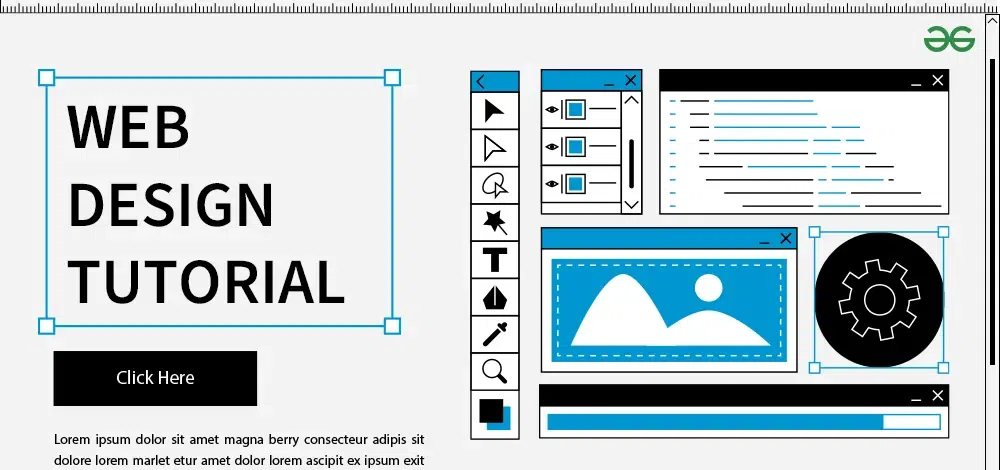Future-Proof Your Company with Ingenious Website Design Trends
Wiki Article

Crafting a User-Friendly Experience: Crucial Components of Efficient Web Site Layout
In the world of web site layout, the significance of crafting a straightforward experience can not be overemphasized. Essential components such as a clear navigation framework, receptive style principles, and quickly filling times act as the foundation for engaging users successfully. An instinctive user interface coupled with accessible web content standards ensures that all people, no matter of capability, can navigate with ease. Regardless of these basic principles, numerous websites still falter in providing this smooth experience. Comprehending the hidden elements that add to effective layout can clarify how to enhance user complete satisfaction and involvement.Clear Navigating Framework
A clear navigation structure is essential to efficient site layout, as it directly affects customer experience and involvement. Users ought to have the ability to find info effortlessly, as user-friendly navigating reduces frustration and motivates expedition. An efficient layout permits visitors to comprehend the partnership in between various web pages and material, causing longer site sees and boosted communication.To accomplish quality, designers need to utilize familiar patterns, such as top or side navigation bars, dropdown food selections, and breadcrumb trails. These aspects not just improve usability yet likewise offer a feeling of alignment within the site. Preserving a consistent navigation structure across all web pages is crucial; this knowledge helps users anticipate where to locate preferred details.
Additionally, integrating search functionality can better help users in situating certain material rapidly. In summary, a clear navigating framework is not simply a style choice; it is a strategic aspect that considerably impacts the total success of a site by cultivating a satisfying and reliable user experience.
Responsive Design Principles
Reliable website navigating sets the stage for a smooth customer experience, which becomes a lot more vital in the context of responsive style concepts. Responsive design ensures that web sites adapt fluidly to different display dimensions and orientations, improving access throughout gadgets. This flexibility is achieved through flexible grid formats, scalable photos, and media queries that permit CSS to adjust styles based upon the device's characteristics.Key principles of receptive style include fluid layouts that make use of portions as opposed to repaired units, making sure that aspects resize proportionately. In addition, employing breakpoints in CSS makes it possible for the design to change efficiently in between different tool dimensions, optimizing the layout for every display kind. Making use of responsive images is likewise crucial; images should immediately adapt to fit the screen without losing quality or causing format changes.
Furthermore, touch-friendly interfaces are vital for mobile users, with sufficiently sized switches and intuitive gestures boosting customer interaction. By integrating these concepts, developers can create web sites that not only look visually pleasing yet additionally give practical and engaging experiences throughout all gadgets. Ultimately, efficient responsive layout promotes user complete satisfaction, minimizes bounce prices, and encourages much longer interaction with the material.
Fast Loading Times
While individuals progressively anticipate websites to load swiftly, fast packing times are not just an issue of convenience; they are important for preserving site visitors and enhancing general individual experience. Research shows that customers normally desert web sites that take longer than 3 secs to load. This abandonment can bring about raised bounce prices and reduced conversions, eventually harming a brand name's online reputation and income.Rapid packing times enhance customer interaction and satisfaction, as visitors are more likely to discover a website that responds promptly to their communications. Additionally, internet search engine like Google prioritize speed in their ranking formulas, indicating that a slow internet site may have a hard time to attain presence in search results.

Intuitive Interface
Rapid loading times prepared for an engaging online experience, however they are just part of the formula. An instinctive user interface (UI) is vital to Recommended Reading make certain visitors can navigate an internet site effortlessly. A properly designed UI permits users to achieve their objectives with very little cognitive lots, promoting a smooth communication with the site.
Trick aspects of an user-friendly UI consist of consistent design, clear navigating, and well-known symbols. Consistency in layout aspects-- such as color pattern, typography, and switch styles-- assists customers understand exactly how to engage with the web site. Clear navigating structures, including logical menus and breadcrumb trails, allow individuals to discover information rapidly, minimizing frustration and enhancing retention.
In addition, responses systems, such as hover impacts and packing indicators, educate individuals concerning their activities and the site's reaction. This transparency grows depend on and motivates continued engagement. Furthermore, focusing on mobile responsiveness makes sure that individuals delight in a cohesive experience throughout devices, accommodating the varied ways target markets accessibility web content.
Easily Accessible Content Standards

First, make use of straightforward and clear language, avoiding lingo that might perplex viewers. Stress correct heading frameworks, which not just help in navigating however likewise help screen viewers in analyzing material pecking orders properly. Additionally, supply alternative message for images to communicate their significance to users that depend on assistive innovations.
Comparison is an additional important aspect; make sure that text attracts attention versus the history to improve readability. Make certain that video clip and audio material consists of captions and records, making multimedia accessible to those with hearing disabilities.
Lastly, integrate key-board navigability right into your design, enabling customers that can not make use of a mouse to accessibility all site functions (website design). By sticking to these obtainable material standards, internet designers can create inclusive experiences that deal with the needs of all customers, ultimately boosting customer interaction and complete satisfaction
Conclusion
In final thought, the integration of important elements such as a clear navigating framework, responsive design principles, quickly filling times, an user-friendly individual interface, and available content guidelines is essential for producing an easy to use website experience. These parts jointly enhance use and involvement, making sure that individuals can effortlessly communicate and browse with the site. Prioritizing these design components not just boosts general complete satisfaction yet additionally fosters inclusivity, suiting diverse customer needs and check out this site choices in the digital landscape.A clear navigating structure is essential to reliable web site design, as this page it straight influences individual experience and engagement. In recap, a clear navigating structure is not simply a design choice; it is a critical element that significantly affects the overall success of a web site by cultivating a effective and delightful customer experience.
Furthermore, touch-friendly user interfaces are crucial for mobile individuals, with appropriately sized buttons and user-friendly motions boosting user interaction.While individuals increasingly expect internet sites to fill quickly, fast filling times are not simply an issue of ease; they are vital for keeping visitors and boosting total customer experience. website design.In conclusion, the integration of vital components such as a clear navigating framework, receptive layout concepts, quickly filling times, an instinctive user interface, and available material guidelines is vital for creating an user-friendly website experience
Report this wiki page